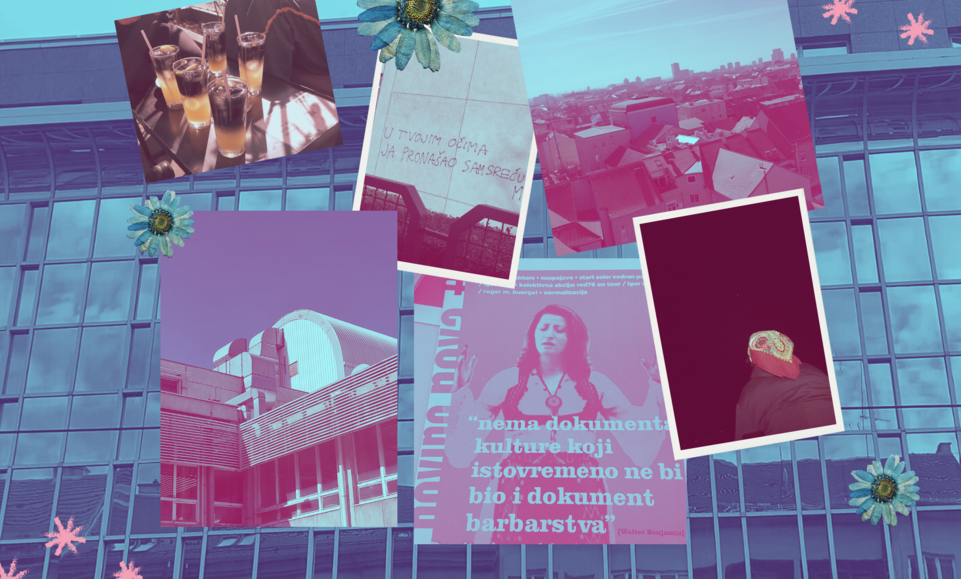This week, we visited Kontenjer, a cultural space that also functions as a curatorial collective. They organize music festivals and other exhibitions. Our discussion mainly revolved around the space they occupy on Odranska Street, near the student dormitories. The space itself was impressive. What struck me as unusual was that they pay for the space themselves, with no direct support from the city. This was in contrast to other organizations we’ve talked to, where some either own their spaces through family (mom or dad) or have municipal backing to secure them.
In our meeting with WHW, we had the chance to speak with curator Ana Kovačić, who shared the history of Galerija Nova. She explained how they were asked to leave their previous space, their current situation, and the gallery they will soon move into. She also talked about the upcoming exhibition they are organizing, titled Pet bijelih stepenica, which will take place across the city. I have had the pleasure of working with WHW at Kunsthalle Wien for two months, and that experience has been a cornerstone in shaping how I see exhibitions.
Founded in 1975, Gallery Nova is a city-owned non-profit that was initially part of the Center for Cultural Activity of the Socialist Youth of Zagreb. It gained recognition in the 1970s for its bold exhibitions, showcasing avant-garde modernist artists. Since 2003, WHW has directed the gallery, focusing on artistic and educational projects that blend the practical with the speculative, the personal with the political, and the artistic with activism (from their website).
I also had the pleasure of picking up one of their publications from 2004, featuring Shkurte Fejza on the cover, with a quote by Walter Benjamin. The work is by Erzen Shkololli.
This week, I reflected a lot on the term Kosovar or Kosovian. It doesn’t refer to an ethnicity but to a place—a term that marks where someone has lived most of their life or perhaps where they were born. I’m not sure how this idea fits here, but it’s something that’s been on my mind.
I also noticed that many collectives and organizations in Zagreb seem to have started out through festivals.
In a meeting with the collective of curators -[Blok]- we had the opportunity to speak with Ana Kutleša and Dunja Kučinac, who shared the collective's projects, how they were formed, and their operating ideas within the independent scene in Zagreb. I found a lot of inspiration in their stories. One idea that stood out was their work within the neighborhood of Trešnjevka, which I learned that historically was a workers’ district. I also loved the concept of the online Trešnjeva Museum, where they collect and digitize objects important to the community, and write stories around them. I also want to highlight the ‘curatorial approach’ of giving the neighborhood's residents the power to choose what should be preserved. It also touches on themes of migration.
Another aspect I admire about Blok is their focus on workshops, which are often attended by older women. They also publish books, primarily critical and political works, along with art books. What I particularly enjoyed was the strong sense of collaboration and connection among the women in the collective. The atmosphere was very welcoming, and filled with curiosity.
Our conversation with them left a lasting impression. They raised important points about how they, as cultural workers, reflect on their own exploitation, not just that of others. They emphasize the role of cultural production and its implications. What struck me most was their efforts to politicize the art scene and create a political school for artists. This was especially impactful because they don’t focus on academic philosophy or the dry language of critique. Instead, they make the basics of socially engaged art more accessible to artists who want to work within that framework.

